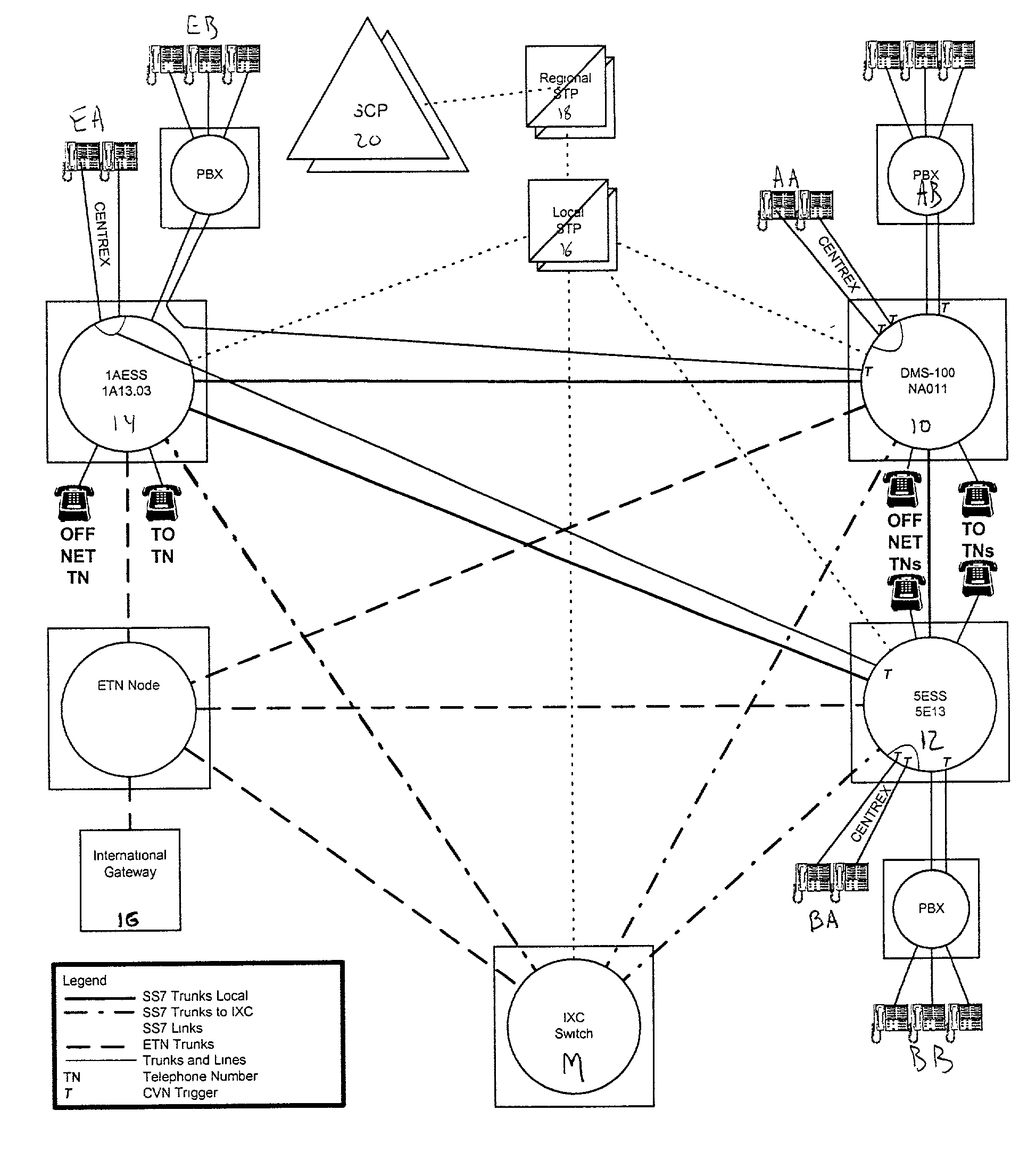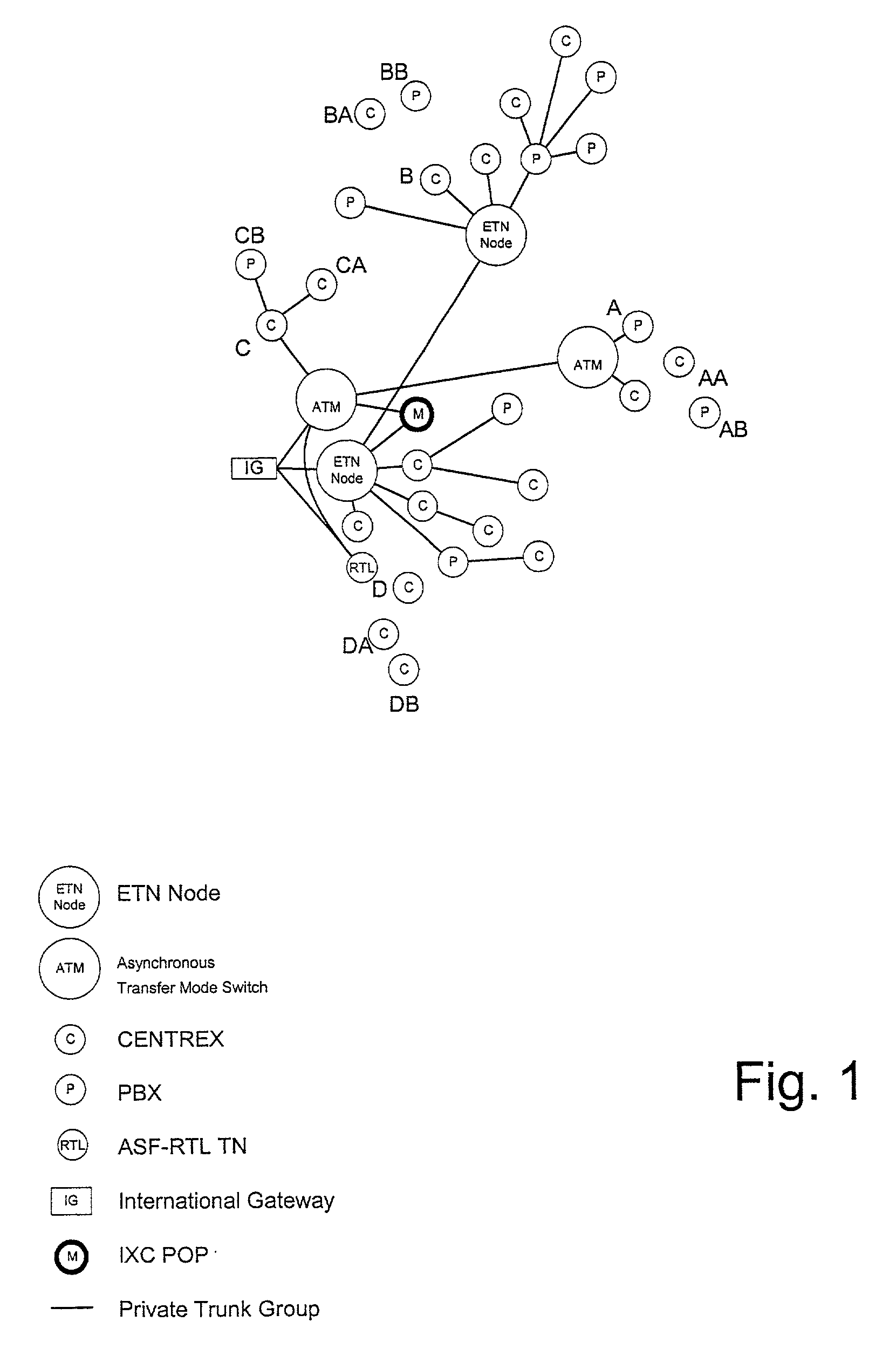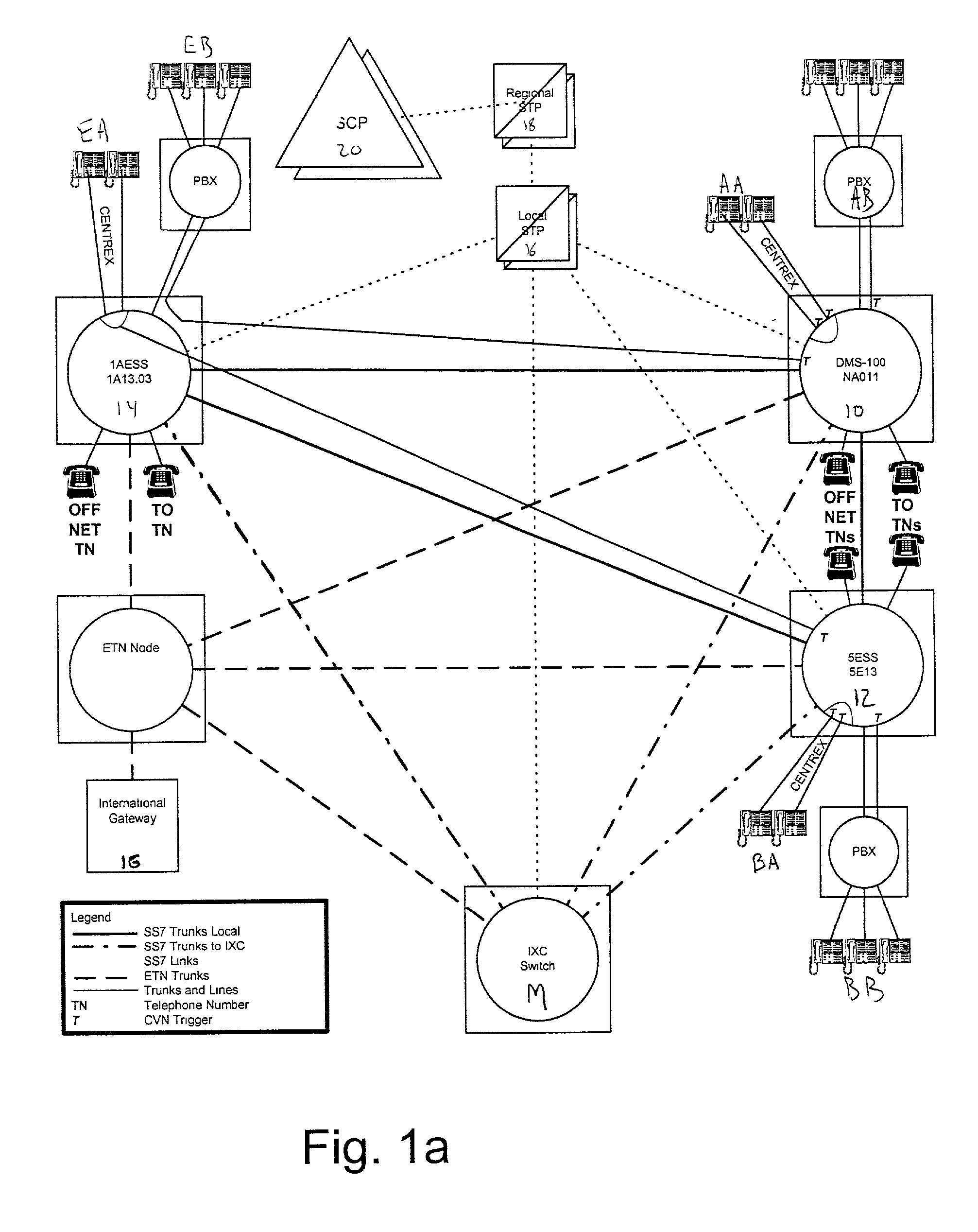Method and system for generating call data reports
a call data and call data technology, applied in the field of telecommunications, can solve the problems of limited flexibility, onenet and mci perspective does not, however, provide a predictable monthly bill
- Summary
- Abstract
- Description
- Claims
- Application Information
AI Technical Summary
Benefits of technology
Problems solved by technology
Method used
Image
Examples
Embodiment Construction
[0086]In view of the above, the present invention through one or more of its various aspects and / or embodiments is presented to accomplish one or more objectives and advantages, such as those noted below.
[0087]An aspect of the present invention provides a method for obtaining call data in a telecommunications system. The telecommunications system includes a service control point (SCP) and a public switched telecommunications network (PSTN), which includes at least one switch. According to the method, calling data received from the switch is sampled at the SCP and formatted as station message detail recording (SMDR) data at a front end processor. A call data report is generated from the SMDR formatted data. The sampled call data can be stored at a data distributor node or the SCP. The call data report is stored at a host processor, where it is accessible by a customer.
[0088]Another aspect of the present invention provides a method for reporting calling data to a telecommunications sy...
PUM
 Login to View More
Login to View More Abstract
Description
Claims
Application Information
 Login to View More
Login to View More - R&D
- Intellectual Property
- Life Sciences
- Materials
- Tech Scout
- Unparalleled Data Quality
- Higher Quality Content
- 60% Fewer Hallucinations
Browse by: Latest US Patents, China's latest patents, Technical Efficacy Thesaurus, Application Domain, Technology Topic, Popular Technical Reports.
© 2025 PatSnap. All rights reserved.Legal|Privacy policy|Modern Slavery Act Transparency Statement|Sitemap|About US| Contact US: help@patsnap.com



